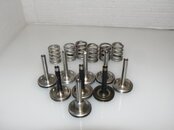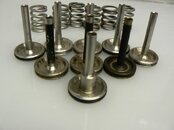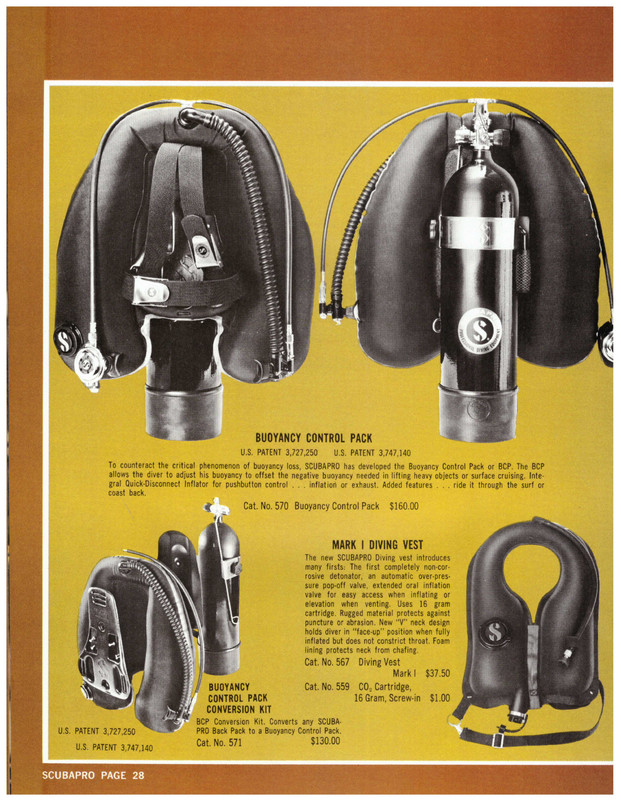Hey, I appreciate you taking the time to respond here. I just got back from the shop that has my regs, and they went over the reg with me in great detail. He showed off a few things:
* Despite having the 5LP port cap and the thicker yoke, my reg had the straight shaft piston. In his repair diagram he had a note saying that those pistons were unsafe to use. He actually called scubapro with me there asking for more details, and they again said not to use it.
* The spring has gone soft, and despite the excessive amount of shims in my reg it was still barely in IP spec
* it was missing some flat washer that was supposed to be present (number 5 on the diagram i think), that is supposed to keep the HP seat in place. In its place some random 0 ring was redneck-ed in. The replacement part seems to be unavailable.
In addition to the above, he showed me my 109s diaphragm, which looks very worn and again seems to not have replacements available. All that has me strongly considering a new MK19 and D420 set they had on hand for a fantastic deal. Again though, would love a second set of eyes / opinion here. Thanks
I’ll go through your points one at a time. I’m very familiar with MK5s. If you want to post a photo, especially of the piston, I’ll be happy to comment on that. But the bottom line is that I think the guy at the shop doesn’t really know what he’s doing with this regulator and of course both the shop and SP are in business to sell new regulators.
First, the 5 port MK5 is, in my opinion, one of the best 1st stages ever. I have had them go for 5-6 years between rebuilds and hold IP perfectly. I’d be happy to look at your piston, but I’ve never seen an early piston in a 5 port MK5. Not impossible, but I suspect either this guy at the shop doesn’t recognize the piston for what it is (even the later ones look different from subsequent pistons on the MK10-15-20/25) or someone put an earlier piston in your regulator. Either way, it’s very easy to find good MK5 piston on the used market. Of course a shop won’t do that, and you can’t blame them. It’s not their business. I would have to see that piston, but I’m very skeptical that it actually constitutes any sort of risk whatsoever.
Second, the spring. They do, on occasion, wear out. But there are three seats that come with the MK5/10 rebuild kits, and the shortest seat (marked + on the back) is the one to use to raise the IP. I keep my MK5s between 125-130 PSI, which works perfectly. Higher IP is not advantageous, especially with a balanced 2nd stage. If your regulator won’t get to 125 with the + seat and a shim at each end of the spring, then you do need a new spring, and once again, the used market is perfect for this.
Third, the o-ring that seals the HP seat is correct; all MK5s used an o-ring in that spot. Later, in the MK10, it was replaced by a square-profile washer, which works great, but the issue with the o-ring was that it wasn’t idiot proof enough for poorly skilled or trained techs. (It takes a little patience to seat that o-ring) The fact that your guy thinks this o-ring was ‘red-necked in’ is an indication that he isn’t very familiar with this 1st stage. It’s not uncommon for dive shop techs to lack any sort of understanding of older regulators.
Fourth, I have seen some 109 diaphragms get sticky, which is an indication that the silicone is breaking down. Fortunately the G250 diaphragm fits and works perfectly, and there are plenty of those around.
If you want a new regulator, go for it. This is a hobby, and spending your money on your hobby is definitely your business. But you’re not getting expert knowledge on your regulator. Here’s a short story; I once walked into my local scuba pro shop when I lived in San Antonio, maybe 15 years ago, and saw a bucket of 109s and Air1s at the foot of the dive shop tech’s bench. He was going to throw them away after having sold new regulators to customers that had brought them in for service. So I bought the bucket for $100, and still use 3 of those 109s for SM, stages and deco regs. (They are perfect for high FO2 use)
I’m tempted to offer you a small amount of money for your MK5/109 and rebuild it and add it to my collection, but I have plenty! Still, if you do end up getting a new regulator, and you want to responsibly get rid of yours, I’ll take it, rebuild it, and post photos on here. I probably have a donor spring if it’s needed, and I’m sure I could find the other parts. But again, rsingler would be a good guy to talk with because he knows these old regs and he’s in the business of rebuilding them. He’s on this forum frequently.
One last word to an already-too-long post. I’m not a huge fan of the MK19, although in fairness it’s been years since I’ve even seen one or worked on one. But my memory is that they are not very well balanced; IP rises about 10 PSI (or more) as the tank empties. With a balanced 2nd stage this doesn’t really matter, but I’m a stickler; IMO the first stage has one job to do, provide constant, steady IP to the 2nd stage. I wouldn’t spend real money on a 1st stage that does not do that. I don’t know much about the D420, but I have heard that it’s nothing like the older D series regs that I love and have several of.







